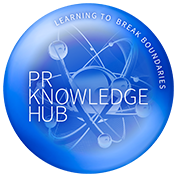Misinformation is not a new phenomenon. Rumours, distortions, and falsehoods have long shaped people’s perceptions. What has changed is scale, speed and sophistication. In today’s world, a single phrase uttered by a leader or a snippet of video from a public event can be stripped of context, remixed with invention and distributed globally in seconds. The result is more than misunderstanding. It is harm. Misinformation moves swiftly from words to wounds.
Holding fast to values
A tragedy becomes a trigger for untruths
In early September 2025, the controversial conservative activist Charlie Kirk was shot and killed at a campus event in Utah. The tragedy was followed almost instantly by an outpouring of misinformation. Bots misidentified suspects, conspiracy theories multiplied and AI-generated fabrications circulated within hours.
The effect was predictable yet chilling. In some corners, Kirk was recast as a martyr. In others, his record of spreading misinformation and falsehoods was rolled out. Conflicting narratives and realities were distorted by the US administration into calls for retribution, deepening polarisation. In our recent Managing Misinformation session we talked at length about moments of crisis create information vacuums and, as soon as an event occurs, misinformation walks into the room.
A bitter pill from the White House
Today, less than a fortnight later, misinformation was on the march again — and again, ordered into action by the US administration. At a White House media conference, President Trump warned against the use of paracetamol (acetaminophen) during pregnancy, claiming links to autism.
Health agencies, professional bodies and other sources who had been frantically pre-bunking prior to the announcement, immediately pushed back, emphasising there is no proven causal link and that untreated fever in pregnancy can pose greater risks than judicious use of the medicine. Yet their careful corrections struggled to keep pace with the viral clips, doctored endorsements and AI-driven content that spread across feeds.
This is the hydra we face. The misinformation monster that chokes the facts with ever-lengthening tentacles. And when authority feeds the monster, lends credibility then algorithms lend reach, the truth, injured, limps behind, struggling to catch up.
Angels and Demons of AI
Artificial intelligence is both angel and demon in this context, bringing life and death to the truth. On the angelic side, AI can help us, scanning datasets for anomalies, supporting fact-checking at scale, watermarking authentic material and providing pre-bunking tools that help people spot fakes before they seed and take root.
As the demon, AI generates convincing deepfakes of voices, faces and documents. It contracts realities and imprisons the impressionable. It personalises propaganda and scales distribution through botnets. Throughout September - this early Fall - AI tools were used to create artefacts that confused, misled and spread faster than any human team could contain.
We must remember, though, that AI does not act alone. Technology sharpens this two-edged sword - but humans wields it.
Why we believe
One of the most important reminders I would share is that repetition breeds belief. The illusory truth effect means that the more often we hear something, the more likely we are to think it true, regardless of evidence. Emotion magnifies this. Rage farmers understand that anger and fear drive sharing, so they design content to provoke and profit.
When a claim comes from a President, repetition is guaranteed. When a tragedy involves a polarising figure, emotion is guaranteed. In both cases, misinformation finds fertile ground.
Managing the flood
What, then, can practitioners do? We cannot dam the river but we can build stronger vessels to navigate it and you might find some of these steps helpful.
- Name the risk - put misinformation in your organisation’s risk register. Disinformation and malinformation must sit in your crisis plan with clear accountabilities.
- Pre-bunk and debunk - prepare explainers before falsehoods land. When correcting, lead with facts and avoid amplifying the myth.
- Fill the vacuum - silence is not neutral. If you don’t speak, someone else will. Provide clear, current information quickly, in accessible formats.
- Audit behaviour - ensure your organisation is not part of the problem. Resist the temptation to join in with memes or jokes that undermine your stated values.
- Strengthen relationships - resilient relationships with stakeholders, communities, and employees provide defence against external distortion. Trust cushions the blow.
Holding fast to values
Managing misinformation is not only a technical task, it is an ethical one. It demands clarity of purpose and consistency of values. If an organisation proclaims commitment to safety and integrity yet shares misleading memes for a cheap laugh it undermines its own foundation.
In times when societal norms are destabilised, holding true to values provides a compass. Question the use of any AI tool or communication tactic. Who benefits? Who might be harmed? Does this align with what we stand for? Are we comfortable defending this?
From words to wounds — and back again
The deaths, distortions and dangerous claims of September 2025 show us the stakes.
Misinformation corrodes understanding, fractures societies and - particularly in the case of public health - endangers lives. From the campus shooting of Charlie Kirk to the White House remarks on medications we see how quickly people move from words to wounds.
For public relations and communication practitioners, the responsibility is clear. Our role is not only to protect reputation but to protect people. To equip communities with the skills to discern, to fill vacuums with credible information and to ensure that our own actions do not make things worse.
We cannot prevent every falsehood but we can refuse to feed the misinformation monster. By holding fast to ethics, strengthening relationships and acting swiftly, we can, at the very least, give the truth a chance to survive.
